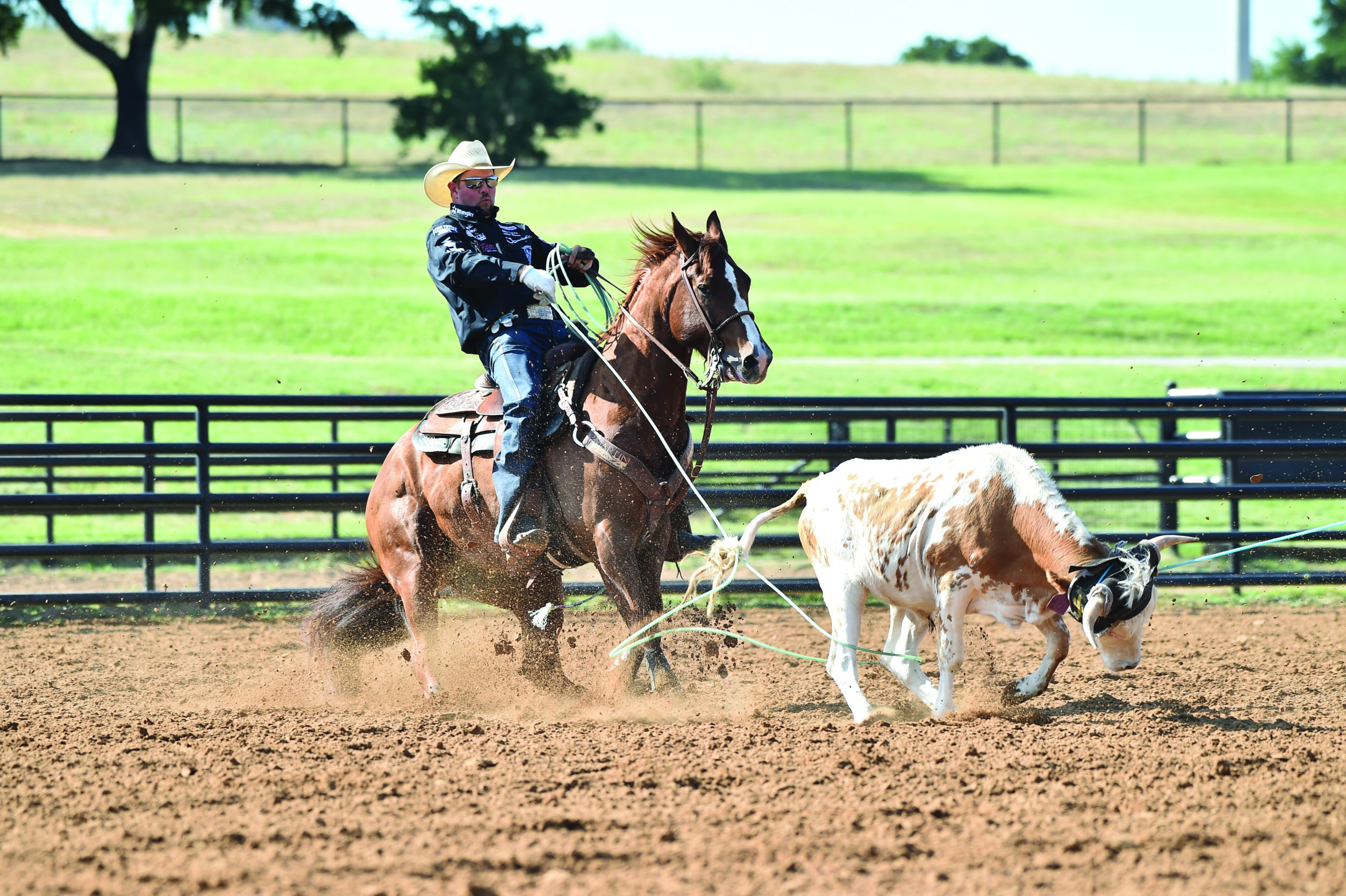At the rodeos, you see it happen all the time: A guy comes around and heels one good, but his horse is bouncing around. He misses his dally just a bit, and his man has already started facing, so now there’s slack in the head rope. The flagger’s been watching all of that, so he makes sure everything is perfect before he gives them the flag. But then, I’ve also seen a heel horse hit the turn crawling on his butt with his shoulders up and square, and he’s got the saddle horn sticking straight up there in the guy’s belly, and he’s easy to throw on and easy to dally on. That horse stops the steer fast and doesn’t give the steer back to the header, so the header can face. The flagger watches the heeler first, then goes to the header, who’s faced and they get a flag—probably a good ways before the guy whose heel horse is bouncing around at the end of the rope. When you’ve got one that stops, you can run one, two or three strides farther and be faster if it all finishes the right way.
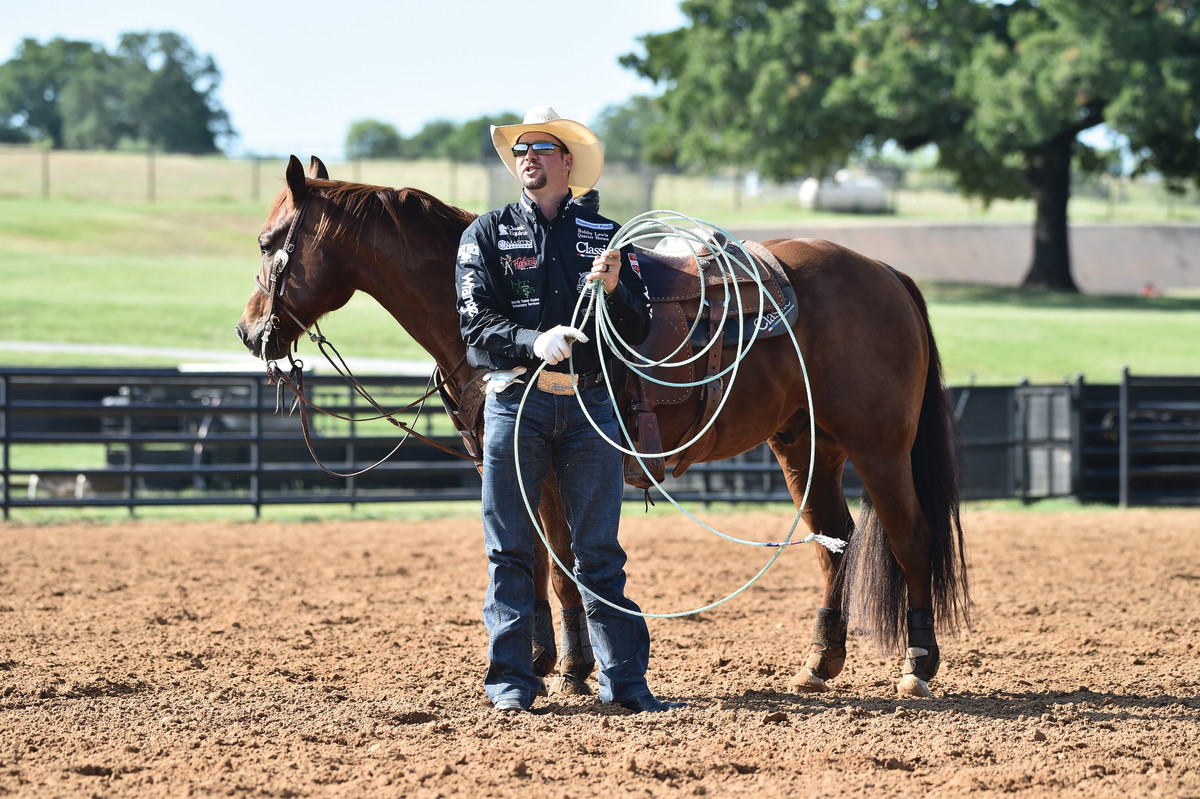
1. This young horse—Freckles Instant Coffee—is proportionally perfect, the way his neck ties into his shoulders and the way his withers tie into his back. He’s short-backed, but long underneath, and he’s just made for getting his butt down into the ground with his head and shoulders up. He’s 14.2—almost 14.3—and that’s nearly perfect. He’s big boned and, the way his hocks are made, he’s not underslung, but he’s not post-legged either. It’s easy for him to get on his butt and stay there. That all makes him really strong in his stop, no matter where he stops from. He can hold the ground, and a steer doesn’t pull him around.
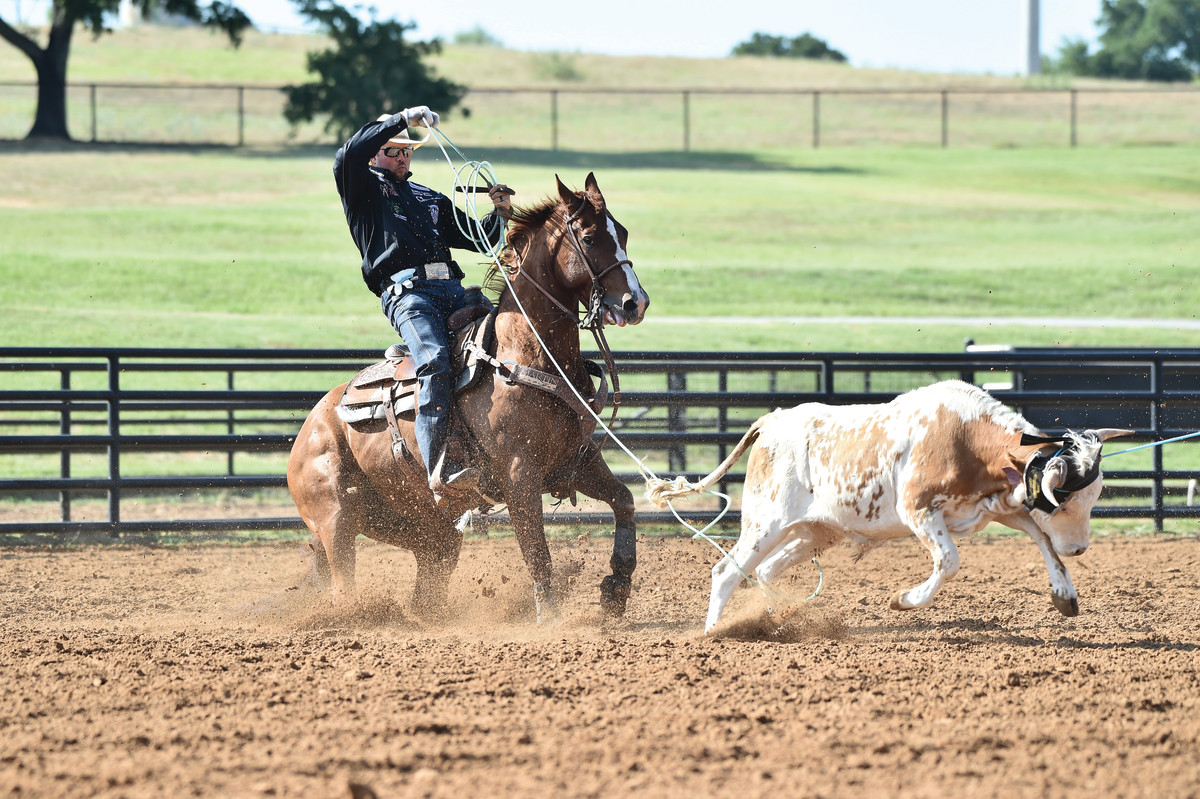
2. With any horse, dog or kid, if they’re doing it and it’s their idea, they’ll do better at it. This horse already wanted to go to a good spot on the cow (with his right shoulder 3 feet back from the steer and about 1–1.5 feet to the inside of the steer). If you’re having to set him up all the time, you won’t be able to focus on your swing and your delivery as much.
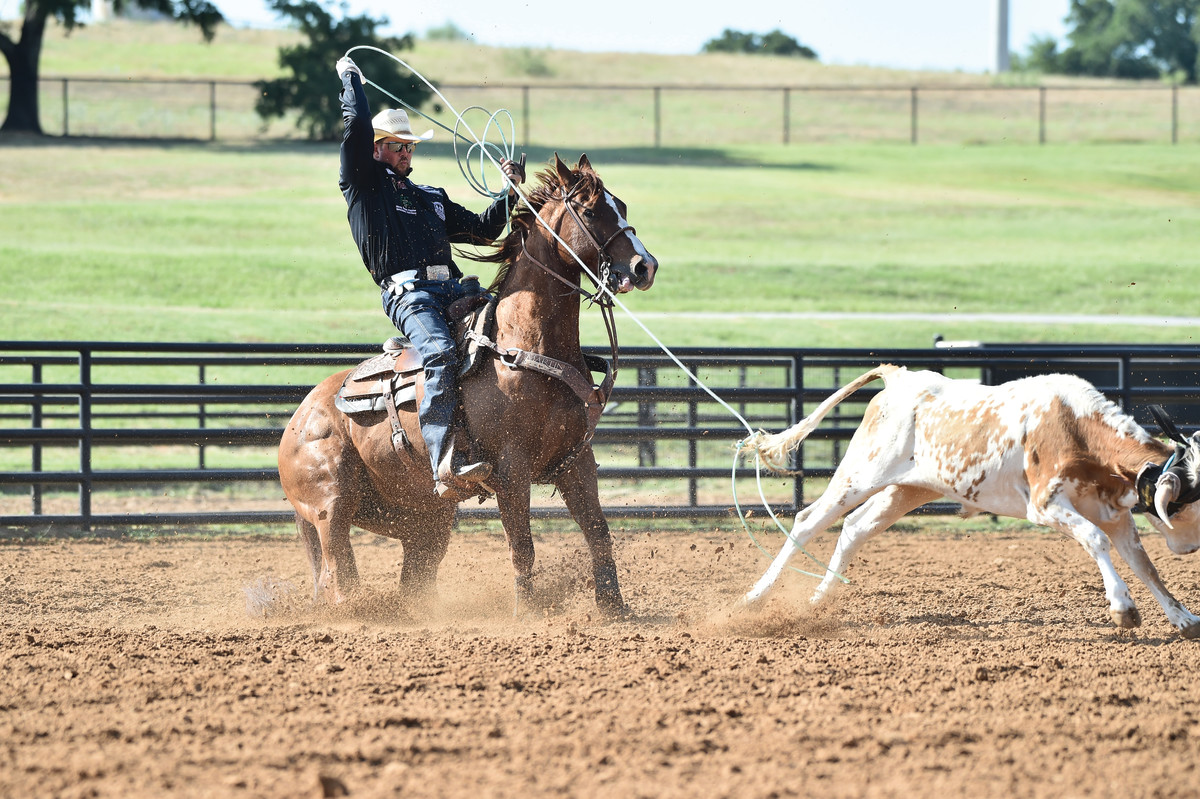
3. When a horse wants to do so good, I try to keep my legs off him as much as I can. I try to take my left leg off and put my right leg on him to keep his hips underneath the saddle to where he’s got some balance.
Controlling Your Horse’s Shoulders and Hips with Joseph Harrison
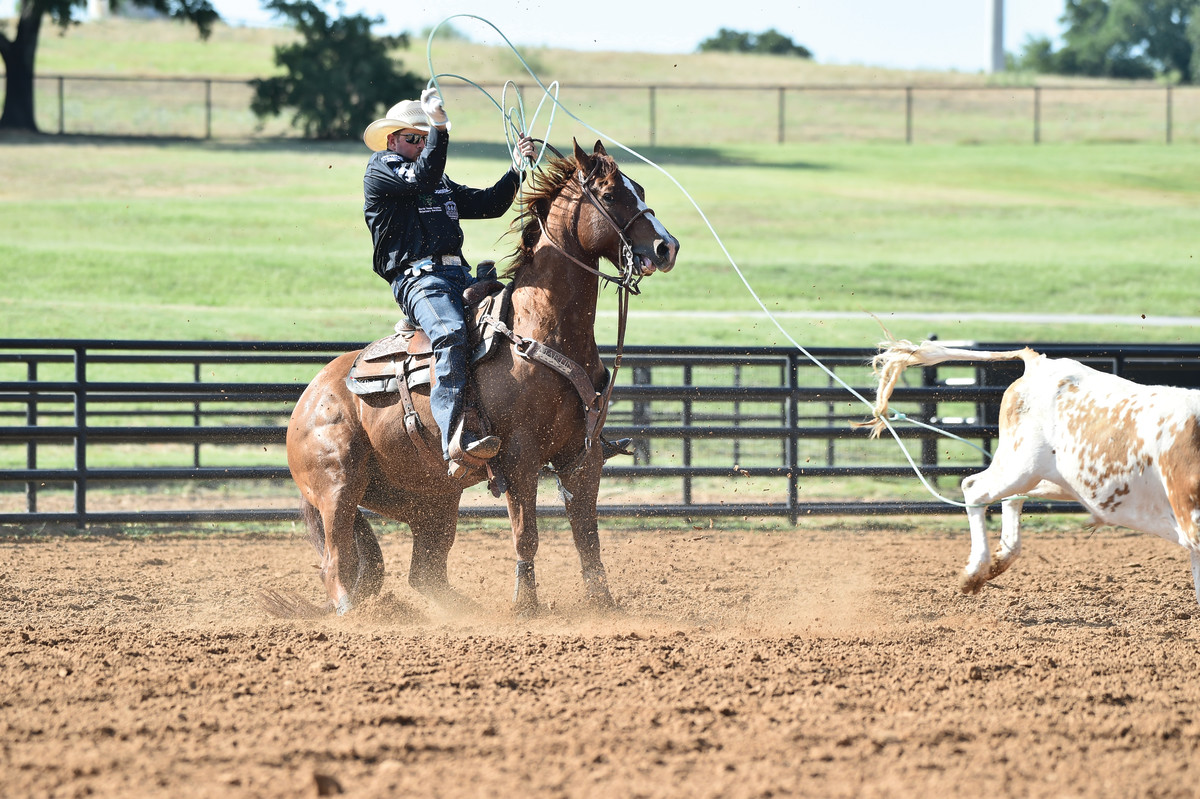
4. After we’ve made it through the corner, I want my horse as straight as I can going across the pen, with his head, neck, shoulders, body and hips in line. That will help him get down into his stop evenly.
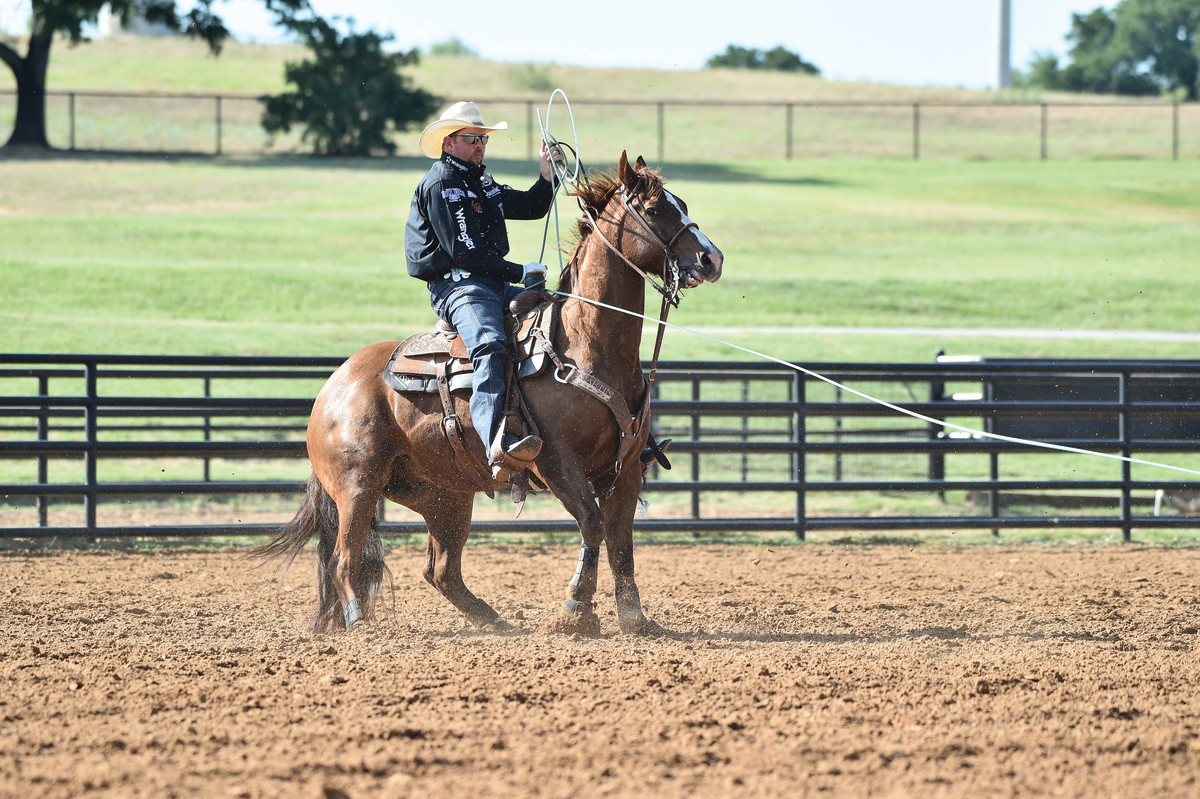
5. My goal is head up, butt down. If his shoulders are down, then his ribs are in the way, making it hard for his butt to be down. If his shoulders are picked up, you can feel his ribs move and get out of the way to where his butt can go down under his rib cage. That’s more comfortable. If his head is down, his butt can’t be down. I’m not necessarily pulling—I’m just holding my hand up there, trying to hold it up straight for the coils and everything else involved. That’s making him free in his front, staying down obviously.




